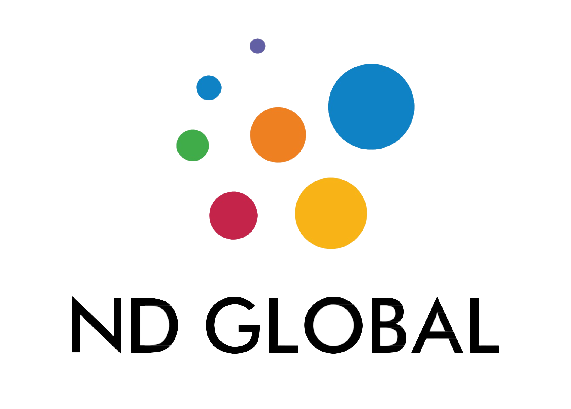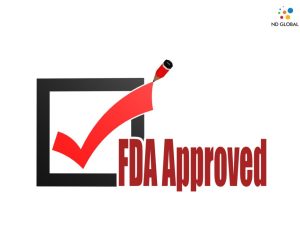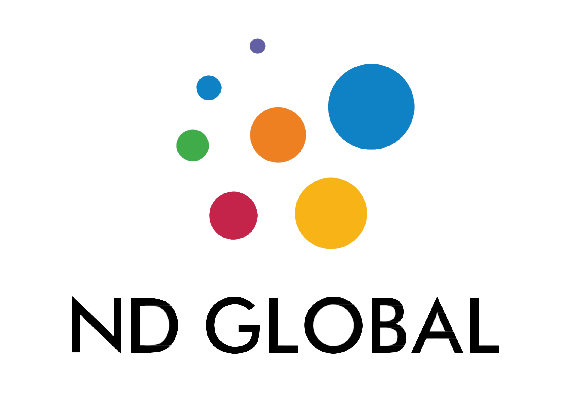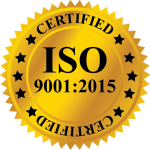Introduction – Manufacturers of medical devices are subject to regulations worldwide to protect the consistency of their products. Manufacturers require a well-organized quality management system to do this. It is mandatory for manufacturers to not only set standards for their goods and procedures but also to implement quality control measures to guarantee that these requirements are fulfilled. They must also ensure they have objective proof that they have complied with the quality system (QS) standards. Global medical device marketing can be demanding and complex when trying to comply with various inconsistent rules. The Quality System Regulations for medical device producers and importers are outlined in FDA 21 CFR Part 820 compliance. A voluntary quality standard, ISO 13485, offers a framework for fulfilling international medical device quality standards.
The FDA Guidelines – Part 820 of Title 21 of the Code of Federal Regulations (CFR) provides manufacturers of medical devices with cGMP and quality system guidelines to guarantee the efficacy and safety of their products that the FDA regulates.
The FDA has established QS requirements in their rule, but it is up to the manufacturers to decide which parts apply to their particular products and procedures and how they plan to comply with the requirements. All completed medical devices sold commercially in the United States are subject to the FDA QS rule, including foreign-made devices. A completed device means “any device or accessory to any device suitable for use or functioning, whether or not it is packaged, labeled, or sterilized,” as stated in 21 CFR 820.3(l). The QS rule even applies to parts of completed devices that are accessories, including blood tubing and diagnostic x-ray components. The FDA has determined that several medical device types are exempt from some GMP regulations; nevertheless, exempt manufacturers must maintain compliant files and design control records.
The ISO Standard – Since the late 2000s, ISO 13485:2003 has become the most complete standard for medical device manufacturers’ management system standards. It outlines what medical device providers must do to satisfy relevant regulatory requirements and customer demands—the global ISO standard attempts to standardize quality management system criteria for medical device regulations. The US Food and Drug Administration does not enforce this criterion, even though it is required in nations that sell goods in EU markets (FDA).
While the FDA rule is based on the 1994 version of ISO 9001, the ISO standard draws its substance from ISO 9001:2000. Although the QMS criteria of ISO 13485:2003 and FDA 21CFR Part 820 may seem similar, they are only partially synchronized.
Following an examination, the table identifies several vital subjects that are covered in greater detail in the standard or the regulation, respectively:
| ISO 13485 | FDA 21 CFR Part 820 |
| Quality Manual Management review Customer focus Product realization, design and development Monitoring and measurement of processes | DMR and DHR Resources and Infrastructure Production and process controls Monitoring and measurement of product Improvement Traceability |
Comparing QMSR and ISO 13485:2016: Highlights and contrasts
The good news is that ISO 13485:2016 and the previous FDA 21 CFR Part 820 already had a lot of commonalities. These connections are strengthened and formalized by the new QMSR, adding new requirements to comply with other FDA standards and clarifying definitions and concepts.
The FDA advice includes the following table that illustrates how the QMSR aligns with ISO criteria and highlights the areas where the most significant variations occur:
| FDA QS Regulation | ISO 13485:2016 | Proposed Rule |
| Subpart A – General Provisions | Clause 1. Scope Clause 4. Quality Management System | Requirements substantively similar |
| Subpart B – QS Requirements | Clause 4. Quality Management System Clause 5. Management Responsability Clause 6. Resource Management Clause 8. Measurement, Analysis & Improvement | Requirements substantively similar |
| Subpart C – Design Controls | Clause 7. Product Realisation | Requirements substantively similar |
| Subpart D – Document Controls | Clause 4. Quality Management System | Differences addressed in 820.35 |
| Subpart E – Purchasing Controls | Clause 7. Product Realisation | Requirements substantively similar |
| Subpart F – Identification and Traceability | Clause 7. Product Realisation | Requirements substantively similar |
| Subpart G – PP&C | Clause 4. Quality Management System Clause 6. Resource Management Clause 7. Product Realisation | Requirements substantively similar |
| Subpart H – Acceptance Activities | Clause 7. Product Realisation Clause 8. Measurement, Analysis & Improvement | Requirements substantively similar |
| Subpart I – Non-conforming Product | Clause 8. Measurement, Analysis & Improvement | Requirements substantively similar |
| Subpart J – CAPA | Clause 8. Measurement, Analysis & Improvement | Requirements substantively similar |
| Subpart K – Labelling and Packaging Control | Clause 7. Product Realisation | Differences addressed in 820.35 |
| Subpart L – Handling, Storage, Distribution and Installation | Clause 7. Product Realisation | Requirements substantively similar |
| Subpart M – Records | Clause 4. Quality Management System | Differences addressed in 820.35 |
| Subpart N – Servicing | Clause 7. Product Realisation | Differences addressed in 820.35 |
| Subpart O – Statistical Techniques | Clause 7. Product Realisation Clause 8. Measurement, Analysis & Improvement | Requirements substantively similar |
Where do the FDA QMSR and ISO 13485 diverge?
However, as previously said, there are some areas where the FDA wants to keep or establish its unique standards. It should be mentioned that the QMSR will always take precedence over ISO 13485 criteria in cases where they clash.
Here is a (partial) summary of the variations:
- Customer definition: According to the planned QMSR, a “customer” is any internal or external entity that receives a good or service. Crucially, this can apply to end users, contract manufacturers, and component producers.
- Requirements for signatures and dates: By ISO 13485 Clause 4.2.5, the FDA recommends imposing signature and date requirements on records. The goal of this is to guarantee the accuracy of the records. The focus is on completing the standards as a whole rather than on the type or method of signing, even if records can be in hardcopy or electronic form.
- Medical device reporting: The FDA suggests that particular complaint and servicing activity logs contain the data mandated by section 803, Medical Device Reporting.
- Record confidentiality: To ensure protection by 21 CFR part 20, the FDA intends to keep the present clarification from part 820 on the confidentiality of records it receives.
- Records’ accessibility: according to ISO 13485 Clause 4.2.5, documents must be “readily identifiable and retrievable.” In the eyes of the FDA, this is just like the present requirement under part 820 that documents be “reasonably accessible” and “readily available.” Records held somewhere other than the establishment under inspection during an examination must be produced within a day or two. Information released this way is regarded as “readily identifiable and retrievable.”
- Controls over labeling and packaging: Section 820.45 of the proposed Part 820 will include a new provision on labeling and packaging from the FDA. This section will need thorough instructions for packaging and labeling tasks. The Unique Device Identifier (UDI), often known as the UPC, the expiration date, and instructions for handling, processing, and storage will be crucial requirements. This is on top of the current 21 CFR Part 801, which already specifies the conditions medical device labels must meet.
- Increased standards for traceability: The FDA intends to extend Clause 7.5.9.2’s requirements for traceability to include devices that support or sustain life and implantable medical equipment. These items are not covered by ISO 13485, even though they are subject to Part 820.65’s traceability rules.
- Rules for design and development should be clarified: The regulation clarifies that only a subset of Class I, Class II, and Class III device makers are covered by ISO 13485’s Clause 7.3 on Design and Development.
- Combination products: The FDA proposes changes to the cGMP regulations for combination products to give producers a more straightforward approach to proving cGMP compliance.
Conclusion: There is no fundamental difference between the ISO 13485 standard and the FDA 21 CFR 820 rule. Organizations accustomed to adhering to one will typically feel at ease with the other. Currently, the EU, Canada, Japan, Australia, and New Zealand closely adhere to the ISO standard, while the US predominantly relies on the FDA regulation for compliance and regulatory requirements. In the remaining nations, medical device companies typically employ the standard and the regulation or rely on the standard.
How ND Global can help:
ND Global can provide invaluable assistance to medical device manufacturers navigating the intricate landscape of quality management system regulations. With our expertise, we ensure that your organization meets the stringent requirements outlined by both the FDA’s Quality System Regulations (QSR) and the ISO 13485 standard. Our comprehensive services encompass:
1. Compliance Consulting: We offer expert guidance on interpreting and implementing the FDA QSR and ISO 13485 standards, tailoring strategies to suit your specific products and procedures.
2. Documentation Support: Our team assists in developing and maintaining the necessary documentation, including quality manuals, design control records, and regulatory submissions, to demonstrate compliance with regulatory requirements.
3. Audit Preparation: Our thorough audit preparation services ensure that your organization is well-prepared for FDA inspections and ISO certification audits, minimizing the risk of non-compliance and potential penalties.
4. Continuous Improvement: We collaborate with your team to implement continuous improvement initiatives, fostering a culture of quality excellence and innovation within your organization.
By partnering with ND Global, you can streamline your compliance efforts, mitigate regulatory risks, and focus on advancing your business objectives with confidence. Let us be your trusted partner in achieving and maintaining compliance in the dynamic landscape of medical device manufacturing.










